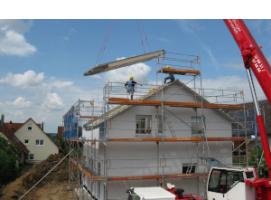LEED Certification and Product Specifications Update
- < HPD Versus The Declare Label: Why Should Building Product Manufacturers Care?
- > Is Plastic the Next Trend in Green Building?
The USGBC released their 3rd quarter 2018 LEED certification update. The key takeaways revolve around the achievement level, LEED rating version, and LEED rating system. Also, metrics include the country and state where certifications took place. There are several good signs for building product manufacturers which we’ll explore.
The LEED Certification update: Third quarter 2018 identifies where LEED certification has been a success globally. For the 3rd quarter of 2018, there have been 592 commercial projects certified in the United States and 41 in Canada. Furthermore, there has been 99,251, 213 gross sq. footage certified for the United States during that period. The commercial projects were nearly evenly divided between Certified, Silver, and Gold. Platinum projects accounted for less than 5% of the total number of certified projects.
Nearly 92% of the projects were LEED certified under the v2009. Only about 6% of the total LEED certified projects used LEED v4. LEED projects can take a long time to design, build, and ultimately to certify. It’s not surprising that a larger number of projects would fall under LEED v2009. However, it is surprising that only about 6% of the projects were certified under LEED v4 since it launched in 2013. Moving forward, one expects more projects to be certified under LEED v4.
The largest number of LEED certified commercial projects fell under the LEED BD+C rating system with 57% of the total number of LEED certified projects. ID+C made up a large sector as well with 32% of the total number of LEED certified projects. Operations and Maintenance only accounted for less than 10% of the total number of LEED certified projects but made up for it with 32% of the total gross square footage. Other countries with notable LEED certified commercial project statistics for this quarter include Brazil, Italy, China, and India.
One of the biggest changes in LEED v4.1 is that buildings must be recertified annually rather than every five years. It will be interesting to see how this affects LEED certification on the future. Will lots of buildings lose certification? Are there opportunities for product manufacturers to help supply materials for renovations and upgrades to meet current LEED standards?
The economy is experiencing fluctuations throughout the country. According to the Dallas Morning News, nonresidential building starts plunged 44% in the Dallas-Fort Worth area in August compared to the same month a year earlier. However, residential building starts rose 24% year-over-year in August and are 10% higher for the first eight months of the year. In 2017, the Dallas metro area saw $22 billion in construction starts, and was behind only New York City for total building.
Product manufacturers who supply building materials in the residential sector may see record production in some areas of the country. There were 1,282,000 new residential construction starts in August 2018 nationwide. Manufacturers who have diversified product groups could benefit from this growth.
One of the critical aspects of construction in 2018 is a tight labor market and education. There are more eligible jobs that people that can fill them in many parts of the country. There is a shortage of truck drivers throughout the country. Companies are reporting record profits but are having a tough time filling job openings.
Education is another significant factor for construction and the job market in 2018. Many of the people searching for jobs don’t either have the experience or education to fill a job. Building product manufacturers have been in a tough spot for years. Many small and medium sized companies don’t have a team member who is versed in green building principles or LEED. The lack of knowledge has hindered many manufacturers and cost them jobs in the marketplace.
The good news for manufacturers is that there are many free resources available to train their staff about LEED and sustainability. Free LEED Exam Prep and LEED Certification classes are available online for product reps to take. In addition, manufacturers can learn about sustainable documentation like Health Product Declarations (HPDs) and Declare Labels from free resources.
Overall, the opportunities for building product manufacturers in 2018 look very good. LEED certifications continue to expand across the globe and the economy is running on all cylinders. Has your company worked on LEED projects in 2018? What tools and resources do you use to train your staff about LEED?
For more information or to discuss the topic of this blog, please contact Brad Blank





